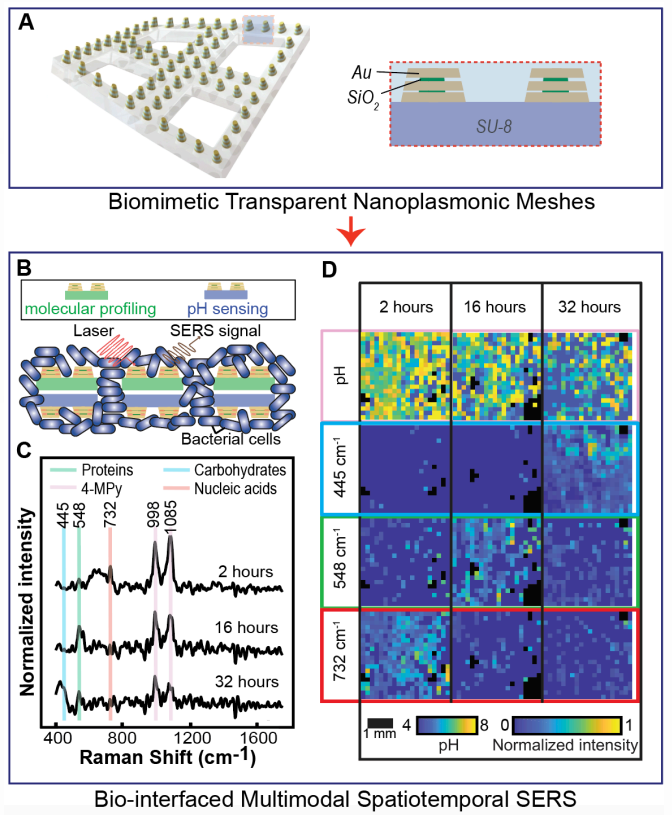THE CHALLENGE
For multicellular systems such as microbial biofilms and tumors it is essential to capture the holistic system-level spatiotemporal picture. This allows for the understanding of complex and dynamically evolving biological activities to determine effective therapeutic intervention methods. Currently, standard bioanalysis methods do not allow in situ spatiotemporal biochemical monitoring of multicellular systems due to their invasiveness or inability to interface with native cellular networks.
OUR SOLUTION
Our technology puts forth a strategy for the high-throughput nanofabrication of biomimetic transparent nanoplasmonic mesh (BTNM) devices for spatiotemporal surface-enhanced Raman spectroscopy (SERS) measurements at the bio-interface. Uniquely, the BTNMs allow SERS measurements in both targeted and non-targeted modalities simultaneously. The BTNMs have allowed for in situ spatiotemporal multimodal SERS measurements of bacterial biofilms for targeted pH sensing and non-targeted molecular profiling. This has opened exciting avenues for bio-interfaced biochemical sensing applications in vitro (e.g., drug discovery for pathogenic bacteria and cancer) and in vivo (e.g., in situ monitoring of wound infection).

(A) Schematic illustration of the BTNMs. (B) Schematic illustration of the BTNMs integrated with bacterial biofilms for bio-interfaced multimodal spatiotemporal SERS measurements. (C) Measured SERS spectra of bacterial biofilms grown with BTNMs at 2, 16 and 32 hours. Note: green lines mark protein peaks, red lines mark nucleic acid peaks, blue lines mark carbohydrate peaks, and pink lines mark 4-MPy peaks (pH label). Time-resolved 2D maps of the pH values and normalized Raman intensities at 445, 732, and 548 cm-1 of bacterial biofilms grown with BTNMs at 2, 16 and 32 hours.